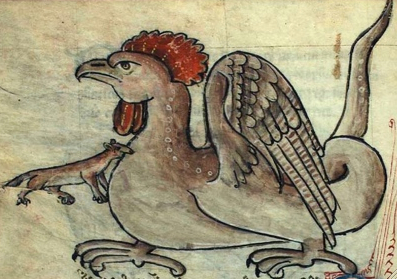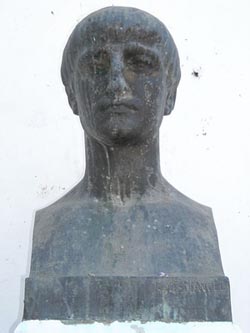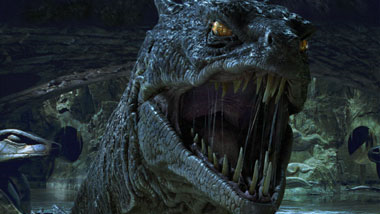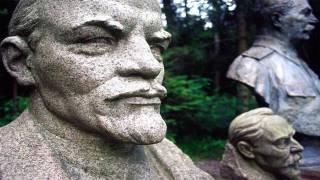On the Trail of the Warsaw Basilisk
Source: blogs.smithsonianmag.com
[Left: Basilisk still from film Harry Potter and the Chamber of Secrets]
The basilisk of legend was rare but decidedly deadly; it was widely believed to wither landscapes with its breath and kill with a glare. The example above comes from a German bestiary dating to the medieval period, but the earliest description was given hundreds of years earlier by Pliny the Elder, who described the monster in his pioneering Natural History (79 A.D.). The 37 volumes of this masterpiece were completed shortly before their author was suffocated by the sulphurous fumes of Vesuvius while investigating the eruption that consumed Pompeii. According to the Roman savant, it was a small animal, “not more than 12 fingers in length,” but astoundingly deadly. “He does not impel his body, like other serpents, by a multiplied flexion,” Pliny added, “but advances loftily and upright.” It was a description that accorded with the then-popular notion of the basilisk as the king of serpents; according to the same mythology, it also “kills the shrubs, not only by contact but by breathing on them,” and splits rocks, “such power of evil is there in him.” The basilisk was thought to be native to Libya, and the Romans believed that the Sahara had been fertile land until an infestation of basilisks turned it into a desert.

Above: A basilisk–a lethally poisonous monster hatched from a cock’s egg–illustrated in a mediaeval bestiary. Note the weasel gnawing at its breast; only they were impervious to basilisk venom.
 The Roman poet Lucan was one of the first authors to describe the basilisk. His work stressed the horrors of the monster’s lethal venom. |
The basilisk remained an object of terror long after the collapse of the Roman empire and was popular in medieval bestiaries. It was in this period that a great deal of additional myth grew up around it. It became less a serpent than a mix of snake and rooster; it was almost literally hellish. Jan Bondeson notes that the monster was “the subject of a lengthy discourse in the early-13th-century bestiary of Pierre de Beauvais. An aged cock, which had lost its virility, would sometimes lay a small, abnormal egg. If this egg is laid in a dunghill and hatched by a toad, a misshapen creature, with the upper body of a rooster, bat-like wings, and the tail of a snake will come forth. Once hatched, the young basilisk creeps down to a cellar or a deep well to wait for some unsuspecting man to come by, and be overcome by its noxious vapours.”
The king of snakes also crops up occasionally in the chronicles of the period, and it is in these accounts that we are mostly interested here, since they portray the basilisk not as an interesting ancient legend but as a living creature and a very real threat. Among the principal cases we might note the following:
- According to the Exercitations of Julius Scaliger (1484-1558), in the ninth century, during the pontificate of Leo IV (847-55), a basilisk concealed itself under an arch near the temple of Lucia in Rome. The creature’s odor caused a devastating plague, but the pope slew the creature with his prayers.
- Bondeson reports that in 1202, in Vienna, a mysterious outbreak of fainting fits was traced to a basilisk that had hidden in a well. The creature, which fortunately for the hunters was already dead when they found it, was recovered and a sandstone statue erected to commemorate the hunt.
- According to the Dutch scholar Levinus Lemnius (1505-68), “in the city of Zierikzee–on Schouwen Duiveland island in Zeeland–and in the territory of this island, two aged roosters… incubated their eggs… flogging them they were driven away with difficulty from that job, and so, since the citizens conceived the conviction that from an egg of this kind a basilisk would emerge, they crushed the eggs and strangled the roosters.”
[...]
Read the full article at: smithsonianmag.com






















